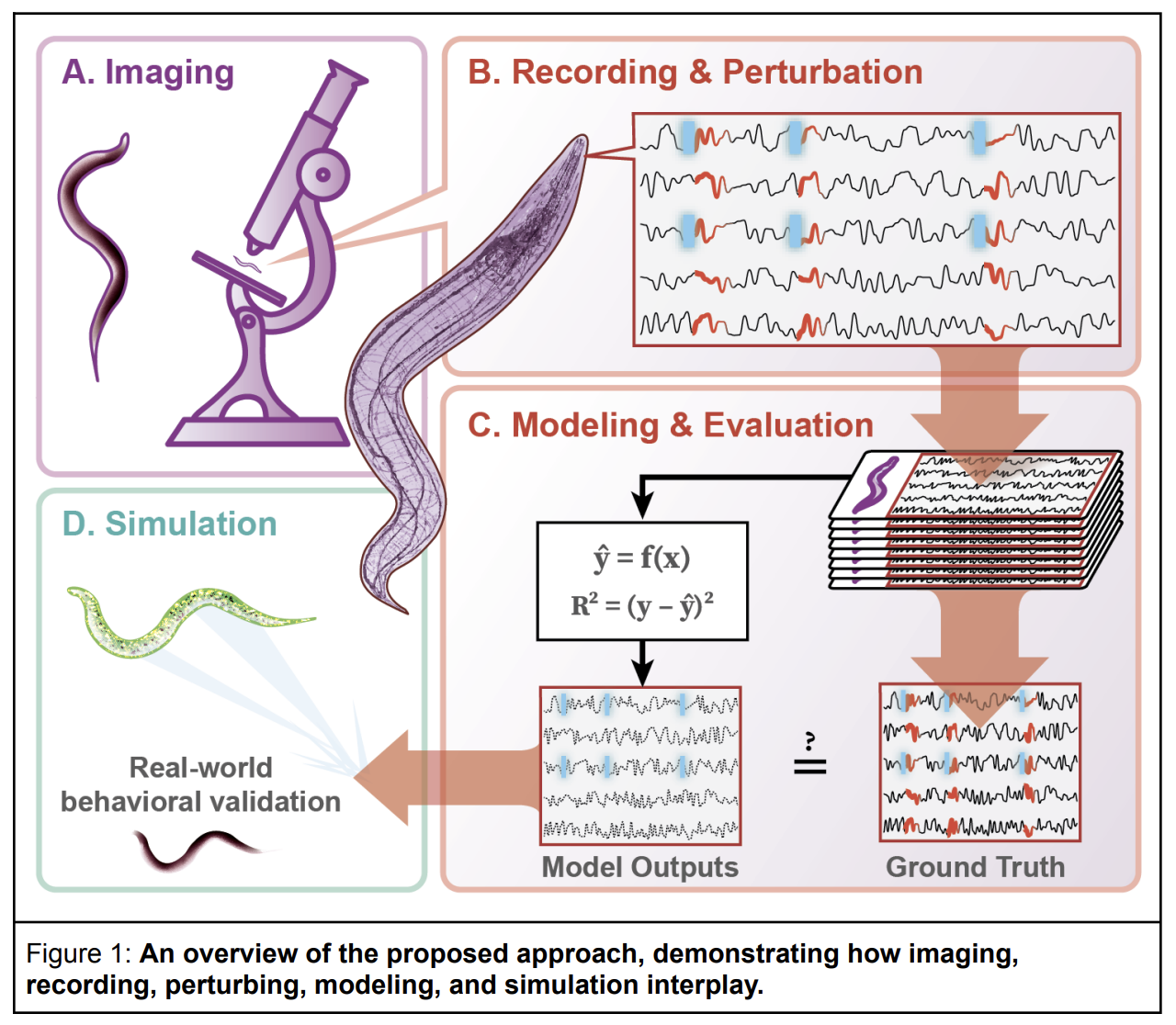
To reverse engineer an entire nervous system
Arxiv, 2023.
A primary goal of neuroscience is to understand how nervous systems, or assemblies of neural circuits, generate and control behavior. Testing and refining our theories of neural control would be greatly facilitated if we could reliably simulate an entire nervous system so we could replicate the brain dynamics in response to any stimuli and different contexts. More fundamentally, reconstructing or modeling a system is an important milestone in understanding it, and so, simulating an entire nervous system is in itself one of the goals, indeed dreams, of systems neuroscience. To do so requires us to identify how each neuron's output depends on its inputs, within some nervous system. This deconstruction, understanding function from input-output pairs, falls into the realm of reverse engineering. Current efforts at reverse engineering the brain focus on the mammalian nervous system, but these brains are complex, allowing only recordings of tiny subsystems. Here we argue that the time is ripe to embark on a concerted effort to reverse engineer a smaller system and that the nematode C. elegans is the ideal candidate system. In particular, the established and growing toolkit of optophysiology techniques can non-invasively capture and control each neuron's activity and scale to hundreds of thousands of experiments, across a large population of animals. Data across populations and behaviors can be combined because across individuals neuronal identities are largely conserved in form and function. Modern machine-learning-based model training should then enable a simulation of C. elegans' impressive breadth of brain states and behaviors. The ability to reverse engineer an entire nervous system will benefit systems neuroscience as well as the design of artificial intelligence systems, enabling fundamental insights as well as new approaches for investigations of progressively larger nervous systems.